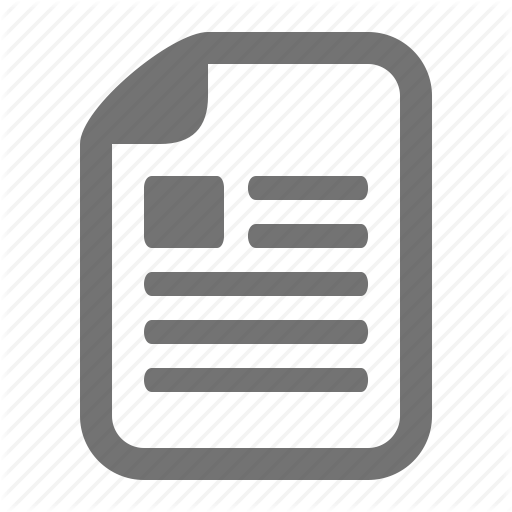ACCT 504 Midterm 2016
Content
ACCT 504 Midterm 2016
Click Link Below To Buy:
http://hwcampus.com/shop/acct-504-midterm-2016/
Question : (TCOs A, B, and C) Shareholders want answers to all of the following questions except:
How does the company compare in profitability with competitors?
Did the company meet its operating expense budget?
Will the company be able to pay its liabilities as they come due?
Is the company earning a satisfactory return?
Points Received: 3 of 3
Comments:
Question 2. Question : (TCO C) Paying cash dividends is an example of a(n)
operating activity.
investing activity.
financing activity.
non-cash financing activity.
Instructor Explanation: Chapter 1
Points Received: 0 of 3
Comments:
Question 3. Question : (TCO C) Buying a new plant would be an example of which type of activity?
Operating
Financing
Investing
None of the above
Instructor Explanation: Chapter 1
Points Received: 3 of 3
Comments:
Question 4. Question : (TCO A) Which of the following should not be classified as a current liability?
Accounts Payable
A note payable due in 15 months
Income Tax Payable
Unearned Revenue
Instructor Explanation: Chapter 3
Points Received: 0 of 3
Comments:
Question 5. Question : (TCO B) For 2012, LBJ Corporation reported net income of $75,000; net sales $750,000; and weighted average shares outstanding of 7,500. There were no preferred stock dividends. What was the 2012 earnings per share?
$100.00
$50.00
$10.00
$110.00
Instructor Explanation: ($75,000 minus 0)divided by 7,500 shares = $10.00, Chapter 11
Points Received: 3 of 3
Comments:
Question 6. Question : (TCO D) Which of the following describes the normal balance and classification of the Unearned Revenue account?
debit, Expense
credit, Liability
credit, Stockholders’ equity
debit, Liability
Instructor Explanation: Chapter 3
Points Received: 3 of 3
Comments:
Question 7. Question : (TCO E) Which of the following statements is correct?
Cash-basis accounting records revenue when earned.
Cash-basis accounting records expenses when incurred.
Accrual accounting records expenses when incurred.
Accrual accounting records revenue when the payment is received in cash.
Instructor Explanation: Chapter 3
Points Received: 3 of 3
Comments:
Question 8. Question : (TCOs A and B) A periodic inventory system would most likely be used by a(n)
automobile dealership.
jewelry store.
furniture store.
local neighborhood restaurant.
Instructor Explanation: Chapter 6
Points Received: 3 of 3
Comments:
Question 9. Question : (TCOs A and B) LBJ Company recorded the following events involving a recent merchandise purchase.
- Received goods for $40,000, terms 2/10, n/30
- Returned $1,200 of the shipment for credit due to damaged goods
- Paid $1,000 for freight in
- Paid the invoice within the discount period
As a result of these events, the company's merchandise inventory
Question 10. Question : (TCO A) In a period of declining prices, which of the following inventory methods generally results in the lowest gross profit figure?
FIFO method
LIFO method
Average cost method
Cannot determine based on the information given
Instructor Explanation: Chapter 6
Points Received: 3 of 3
Comments:
Question 11. Question : (TCO D) A classmate is considering dropping his or her accounting class because he or she cannot understand the rules of debits and credits.
Explain the rules of debits and credits in a way that will help him or her understand them. Cite examples for each of the major sections of the balance sheet (assets, liabilities and stockholders' equity) and the income statement (revenues and expenses).
Question 12. Question : (TCOs B and E) The adjusted trial balance of Gertz Company included the following selected accounts.
Debit Credit
Sales $575,000
Sales returns and allowances $ 50,000
Sales discounts 9,500
Cost of goods sold 347,000
Freight-out 2,000
Advertising expense 15,000
Interest expense 19,000
Store salaries expense 74,000
Utilities expense 18,000
Depreciation expense 3,500
Interest revenue 25,000
Instructions:
1: Use the above information to prepare a multiple-step income statement for the year ended December 31, 2010.
2: Calculate the profit margin ratio and gross profit rate. To qualify for full credit, you must state the formula you are using, show your computations, and explain your findings.
Question 13. Question : (TCO D and TCO E) Please prepare the following journal entries. Indicate which account should be debited and which account should be credited, along with the dollar amount of the debit and credit.
a: Investors invest $100,000 in exchange for 10,000 shares of common stock.
b: Company paid a utility bill for $600.
c: Company received cash of $15,000 for services performed.
d: Company made payment on account for $1,000.
e: Company received $12,000 for services not yet performed.
Question 14. Question : (TCO D) Your friend Dean has hired you to evaluate the following internal control procedures.
a: Explain to your friend whether each of the numbered items below is an internal control strength or weakness. You must also state which principle relates to each of the internal controls.
b: For the weaknesses, you also need to state a recommendation for improvement.
1: Bonding of the cashiers is not required because all of the cashiers have significant experience.
2: The treasurer is the only one allowed to sign checks.
3: All employees may operate cash registers.
4: Blank checks are stored in the safe.
5: Supervisors count cash receipts daily.





















